Trump's push for a comeback in coal may turn to ashes: Maguire
U.S. President Donald Trump has singled out the coal industry as a key driver of U.S. energy dominance, but there are currently no new U.S. coal plants under construction and utilities have identified quicker and cheaper paths to boost power supplies.
In the first few months of Trump's second term, he has signed several executive orders and deployed federal funding aimed at reviving the coal mining and power sectors.
But U.S. utilities continue to prioritize adding renewables, batteries, gas and nuclear power ahead of new coal-fired capacity based on the cost and efficiency.

Even the coal export market has only limited growth potential, as Indonesia and Australia - much larger exporters - boast far quicker and cheaper access to key buyers in Asia, the only region showing a sustained increase in coal demand.
That means that even with strong support from the federal government, the U.S. coal sector may still struggle to generate any sustained growth over the near to medium term as global energy systems continue to lean towards cleaner power supplies.
AGING OUT
There's been six times more coal power plants retired than constructed in the U.S. this century, which underscores the scope of the challenge facing even the most ardent coal bulls as they try to engineer an industry revival.
Between 2000 and 2024, nearly 166,000 megawatts (MW) of outdated coal capacity was retired in the United States, according to data from Global Energy Monitor (GEM).
And even though around 26,000 MW of new U.S. coal plants have been constructed since 2000, the newest - the Sandy Creek Energy Station in Texas - came online over a decade ago.
This has caused total U.S. coal power generation capacity to drop by around 42% in the last quarter century, to around 194 gigawatts, according to Ember.
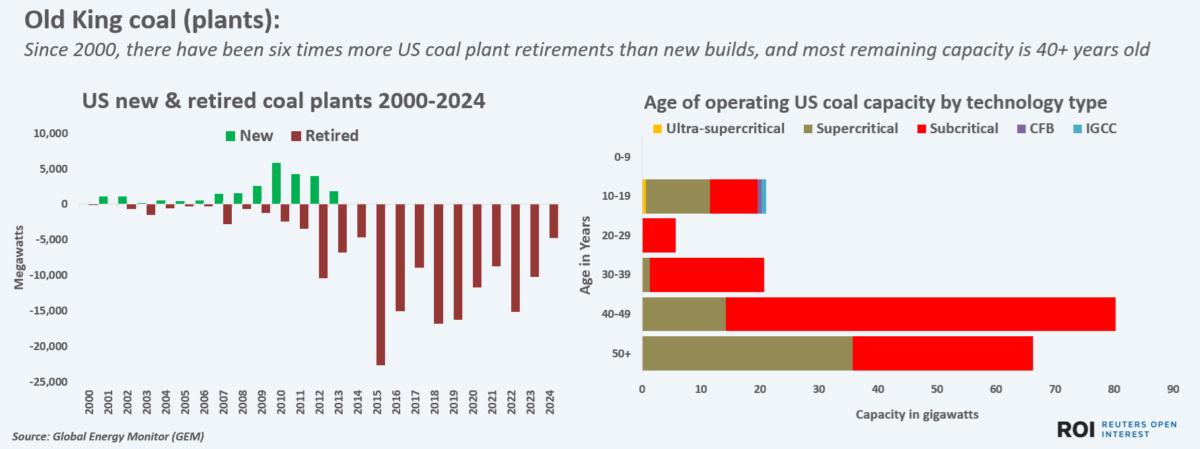
The rapid retirement pace reflects the age of the U.S. coal power network, as more than 80% of all U.S. coal power plants were built between 1950 and 1990, according to the U.S. Energy Information Administration (EIA).
And over 75% of the remaining plants are already 40 years old or more, exceeding their expected lifespan.
Several power networks have delayed the closure of some aged plants on the grounds that keeping them operating will avert potential power shortages.
And the Trump administration has exempted several coal plants from new emissions standards that would have forced them to close within the next decade.
However, the power generation sector is handling less and less coal as more plants have been retired and replaced by other forms of generation.
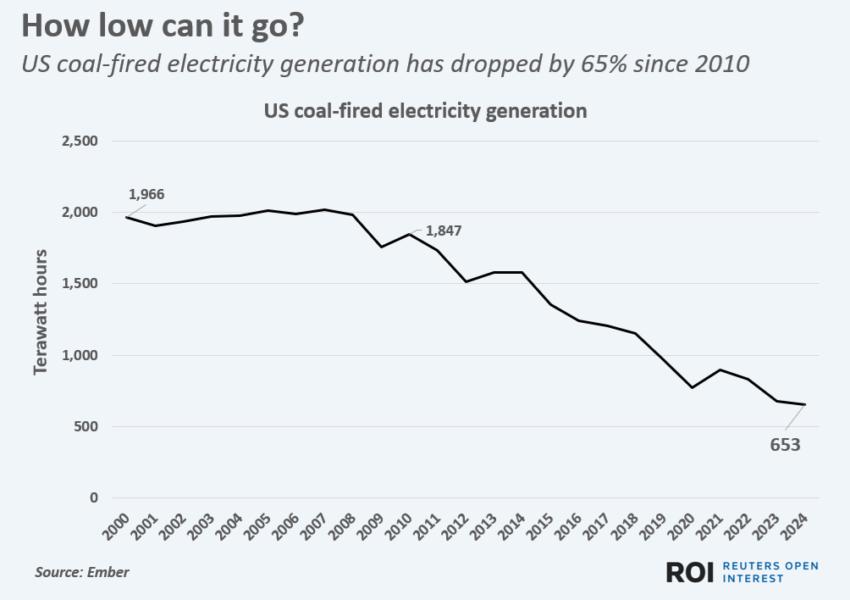
Indeed, since 2000 there has been a 65% decline in the amount of coal used by the power sector, data from the Energy Institute shows.
There is thus little appetite among utilities to construct new coal plants, given the plethora of alternatives available to them that can generate power more quickly and cheaply and with fewer emissions.
COAL CRUTCH
The drop in coal-fired U.S. power has led to a sharp fall in domestic coal mine output, which has more than halved since 2000 to just over half a billion short tons in 2024, EIA data shows.

Wyoming (237 million tons), West Virginia (85 million tons), Pennsylvania (43 million tons) and Kentucky (28 million tons) were the top coal producing states in 2023.
Lower mine output has triggered steep cuts to the number of people engaged in coal mining, which peaked this century in 2011 at around 91,600, but contracted to around 45,500 by 2023, EIA data shows.
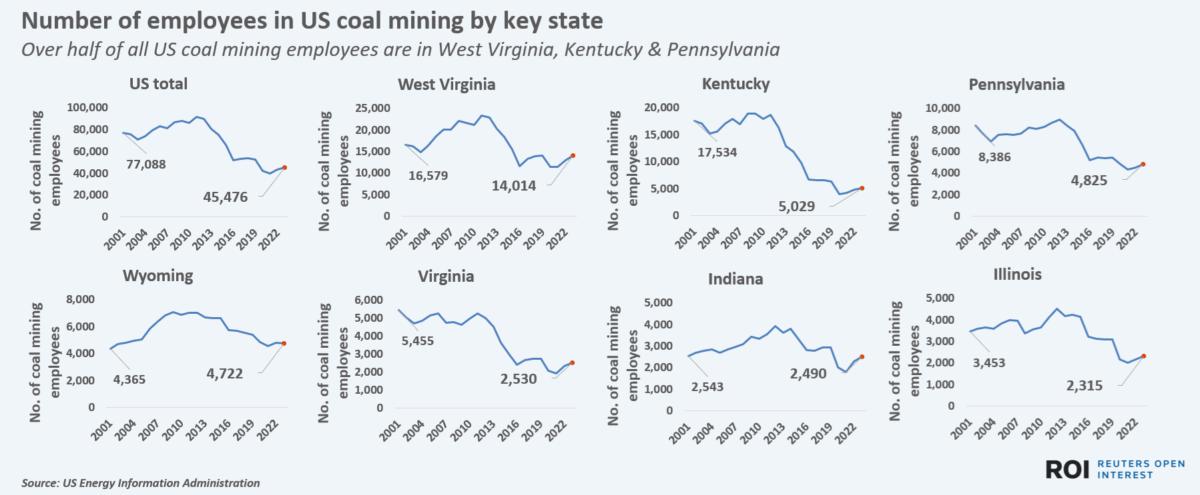
Every major coal mining state has been affected by layoffs, with some harder hit than others. Kentucky has seen coal employee levels drop by over 70% since 2011, while Pennsylvania and Virginia have seen employee numbers fall by nearly half.
EXPORT CHALLENGE
The hardships resulting from these mass layoffs have helped turn the coal mining sector, which is primarily found in Republican "red" states, into an influential political force, as candidates look to tout their industry-friendly credentials.
This has certainly been the case with Trump. Beyond encouraging power networks to increase use of coal in generation, the Trump administration has recently approved mine expansions on federal land in order to boost supplies for export to Japan and South Korea.
Targeting Asia makes sense given that the region's buyers already account for over half of all U.S. thermal coal shipments, data from Kpler shows, as well as 80% of global coal consumption.
However, U.S. market share in the region can only grow so much, as rival exporters such as Indonesia still boast a significant advantage in terms of shipping times and cost.
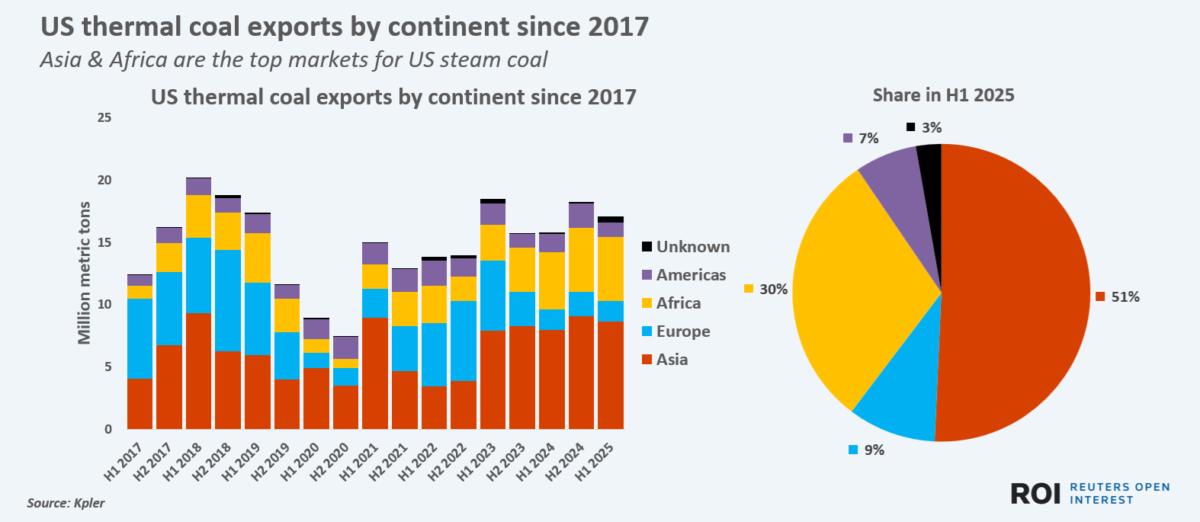
The journey time for a possible coal shipment from Westshore export port in British Columbia - the main exit point for coal mined in the Western U.S. - to Japan is around 15 days, according to LSEG.
In contrast, the journey time from the largest coal export point in Indonesia to Japan is nine days.
In addition to cutting the journey time by over a third, Indonesian coal exporters can also offer lower coal costs and larger cargo volumes, an attractive combination for large-scale importers.
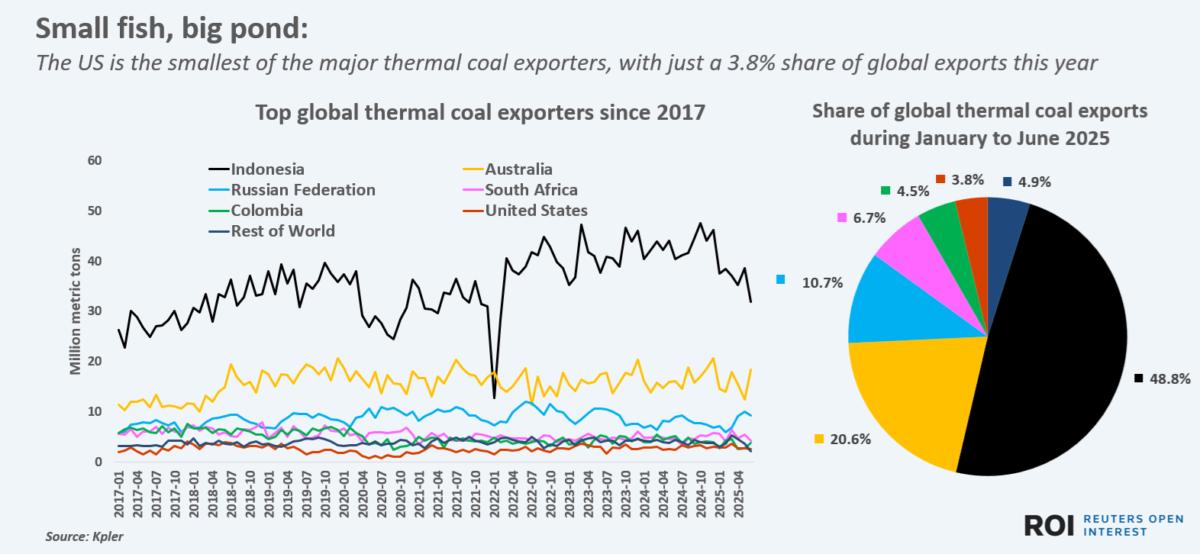
That means that U.S. vendors will likely only be able to eke out piecemeal sales to Asian buyers, while bigger exporters secure larger and more regular trade flows to the region's utilities.
In combination with declining coal demand by power plants at home, this will likely leave the coal mining sector struggling to generate sustained demand for its output, regardless of how much support it enjoys in Washington, DC.
The opinions expressed here are those of the author, a columnist for Reuters.
Enjoying this column? Check out Reuters Open Interest (ROI), your essential new source for global financial commentary. ROI delivers thought-provoking, data-driven analysis of everything from swap rates to soybeans. Markets are moving faster than ever. ROI can help you keep up. Follow ROI on LinkedIn and X .